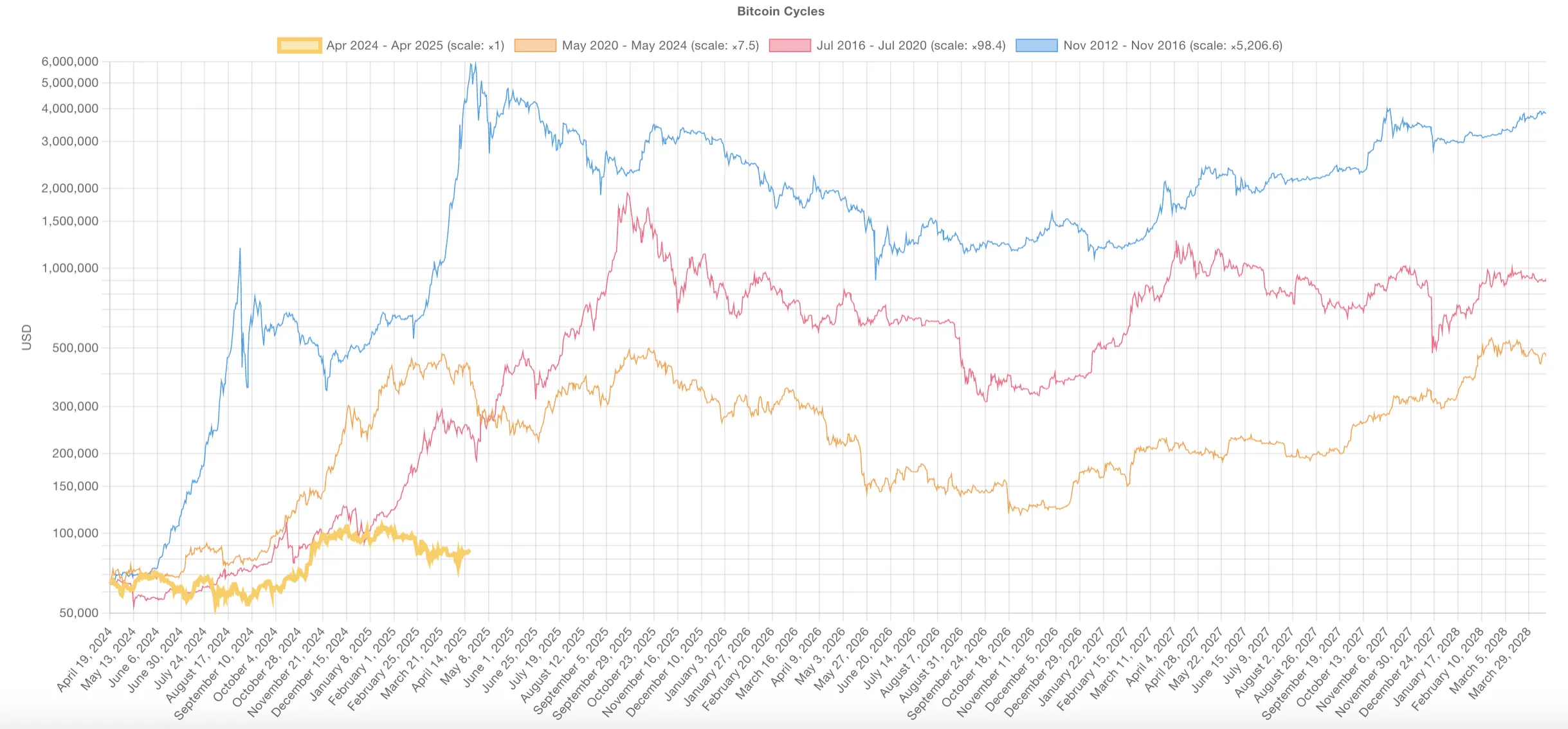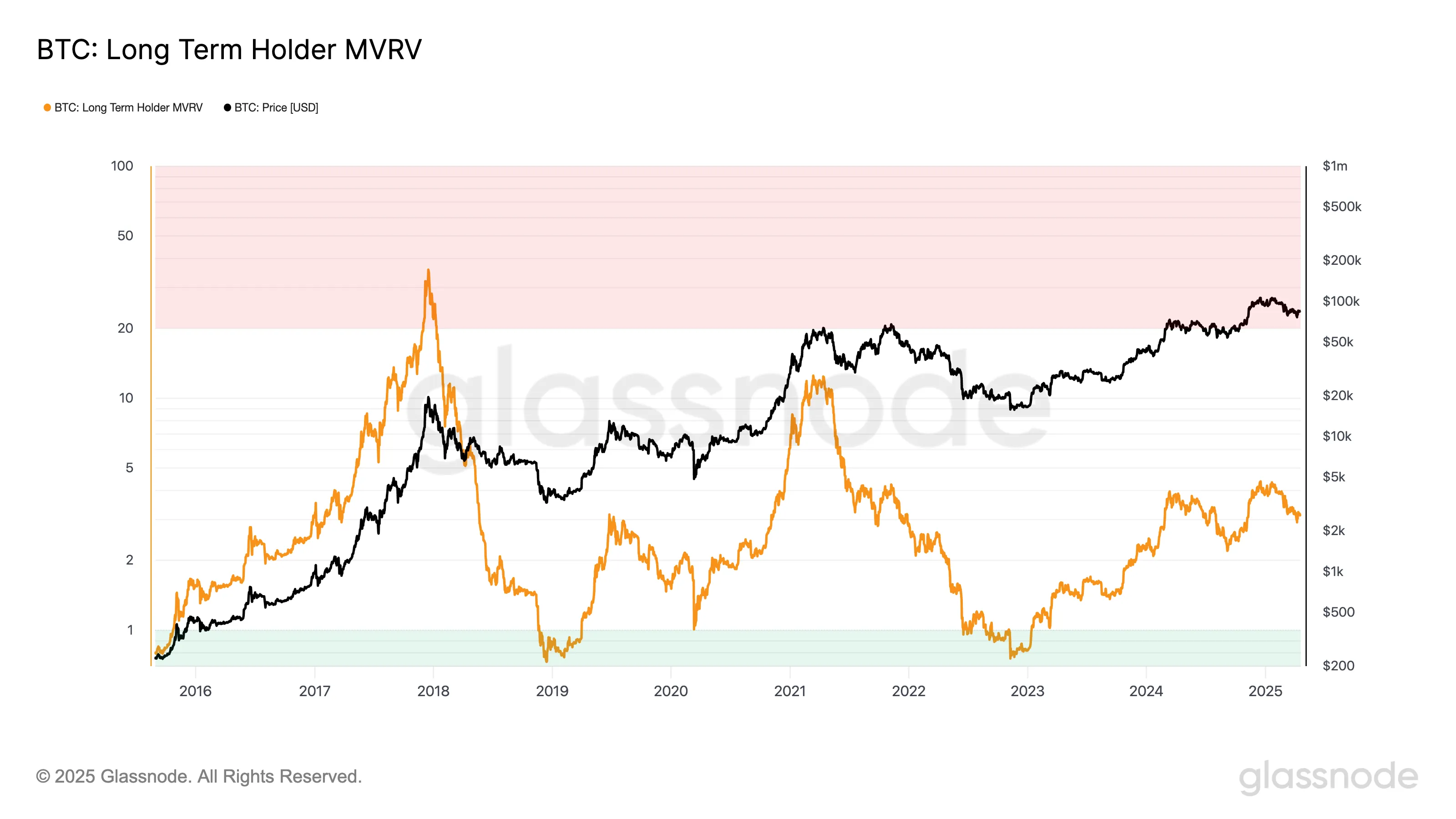Market
The Biggest Names in Blockchain in 2024 Revealed


As an industry, blockchain has consistently outperformed expectations. Currently, it’s poised to reach $248.9 billion over the next 5 years, driven by a staggering 65.5% compound annual growth. This explosive expansion stems from the technology’s innate ability to reshape a vast array of industries via the tenets of decentralization, transparency, and security.
The Potential of Blockchain
A number of key developments have accelerated not just the growth of blockchain, but also its integration into the mainstream. Support from other Big Tech sectors like gaming and fintech has raised the profile of decentralized currencies, in turn bringing the networks that power them to the fore.
This has made some very significant changes. In the gaming industry, for example, the emergence of new platforms and gaming experiences, from Bitcoin casino websites to play-to-earn titles, has pushed the utility of blockchain as much as it has opened access to cryptocurrencies for the average consumer. Cryptocurrencies have enormous potential when being used in the casino world – not least because of the security boost that they offer – and many enthusiastic gamers have moved toward using these for all sorts of online gaming fun, whether it’s slots, poker, blackjack, or something else. This is just one example of how blockchain is changing industries from top to bottom.
Moreover, the application of blockchain to fintech has given rise to DeFi – the decentralized finance sector, which is having a revolutionary impact on financial systems across the globe. It’s transforming digital ownership via non-fungible tokens (NFTs) and digital assets. Alongside all that, blockchain is being increasingly integrated into traditional banking methods.
And as a result of such advancements? Well, a diverse set of companies are now harnessing the potential of blockchain — in some genuinely innovative ways. In this article, we’ll explore those heavy-hitting blockchain companies that are pioneering a unique approach to demonstrating the versatility of this technology, underscoring its pivotal role in the future of international business.
Key Takeaways
- Major blockchain developments include GameFi, decentralized finance (DeFi), NFTs, smart contracts, and integration into traditional sectors like banking and logistics. These trends showcase technology’s ever-growing role in transparency and efficiency.
- A diverse group of companies is leading blockchain innovation, from computing giants creating new digital asset ecosystems to start-ups focusing on decentralized data management and peer-to-peer transactionality.
- With blockchain advancing so rapidly, businesses from across all industries can stay competitive by harnessing its potential to establish secure and efficient operational systems.
Blockchain Companies to Know
Here’s a round-up of the core blockchain companies to know as we head into 2025. While some exclusively operate in the blockchain space, you might recognize a few household names who are leading the charge when it comes to utilizing and advancing blockchain tech.
RIOT Platforms Inc.
Exchange: Nasdaq
Mining is an essential component of the decentralized ecosystem, being critical to Bitcoin and leading blockchain networks. Riot Platforms has been a top player in the crypto mining space since its launch in 2000, and now offers solutions across engineering and data center hosting. Often rated as a Wall Street Strong Buy, the company maintains investments in Verady, Coinsquare, and Tess.
Ripple
Known among gamers and traders for the XRP token, Ripple is actually a powerhouse company in the decentralized technology sector.
Having developed its blockchain network over a decade, Ripple is well positioned as a company delivering products that enable businesses, governments, and financial institutions to tokenize and manage value. Transparency and cost-efficiency are at the center of the blockchain’s offering, which has seen it attract a client base including American Express and BMO.
Coinbase Global, Inc.
Exchange: Nasdaq
The US’ largest cryptocurrency exchange by trading volume, Coinbase is another multi-faceted blockchain company. It’s got a whole suite of products for retail and institutions. Founded in 2012 by Bryan Armstrong, the company is headquartered in San Francisco and incorporates Coinbase Pro, Coinbase Wallet, and USD Coin.
Coinbase’s profile has received a substantial boost this year due to playing a crucial role in the brokerage of spot Bitcoin ETFs.
Binance Holdings Inc
Who hasn’t heard of Binance at this point? Globally recognized, this blockchain ecosystem has developed a comprehensive suite of decentralized products that include the largest digital asset exchange. Founded by Changpeng Zhao in 2017, Binance’s mission is to provide the “core infrastructure services for organizing the world’s crypto.”
Crypto insiders will already be familiar with its currencies: Binance Coin (BNB) and BinanceUSD (BUSD). While it was first launched on the Ethereum chain, BNB has since migrated to the company’s own proprietary network, the BNB Chain, indicating its industry-leading position in the blockchain and crypto space.
IBM
Exchange: NYSE
The multi-national computing giant is well established in the Big Tech space. For decades, its extensive suite of cognitive solutions and cloud platform have powered industries, enterprises, and individuals across the globe – not a bad record!
With a 100+ year history in spearheading innovation, IBM has long been at the forefront of pushing the capabilities of human-tech interaction. It’s therefore not super surprising that it’s been one of the largest names to embrace blockchain and now provides extensive solutions to build blockchain systems across a diverse spectrum of industries, from supply chain management to food product sourcing.
Market
1 Year After Bitcoin Halving: What’s Different This Time?

Bitcoin (BTC) is now one year past its most recent halving, and this cycle is shaping up to be unlike any before it. Unlike previous cycles where explosive rallies followed the halving, BTC has seen a far more muted gain, up just 31%, compared to 436% over the same timeframe in the last cycle.
At the same time, long-term holder metrics like the MVRV ratio are signaling a sharp decline in unrealized profits, pointing to a maturing market with compressing upside. Together, these shifts suggest Bitcoin may be entering a new era, defined less by parabolic peaks and more by gradual, institution-driven growth.
A Year After the Bitcoin Halving: A Cycle Unlike Any Other
This Bitcoin cycle is unfolding noticeably differently than previous ones, signaling a potential shift in how the market responds to halving events.
In earlier cycles—most notably from 2012 to 2016 and again from 2016 to 2020—Bitcoin tended to rally aggressively around this stage. The post-halving period was often marked by strong upward momentum and parabolic price action, largely fueled by retail enthusiasm and speculative demand.
The current cycle, however, has taken a different route. Instead of accelerating after the halving, the price surge began earlier, in October and December 2024, followed by consolidation in January 2025 and a correction in late February.
This front-loaded behavior diverges sharply from historical patterns where halvings typically acted as the catalyst for major rallies.
Several factors are contributing to this shift. Bitcoin is no longer just a retail-driven speculative asset—it’s increasingly seen as a maturing financial instrument. The growing involvement of institutional investors, coupled with macroeconomic pressures and structural changes in the market, has led to a more measured and complex response.

Another clear sign of this evolution is the weakening strength of each successive cycle. The explosive gains of the early years have become harder to replicate as Bitcoin’s market cap has grown. For instance, in the 2020–2024 cycle, Bitcoin had climbed 436% one year after the halving.
In contrast, this cycle has seen a much more modest 31% increase over the same timeframe.
This shift could mean Bitcoin is entering a new chapter. One with less wild volatility and more steady, long-term growth. The halving may no longer be the main driver. Other forces are taking over—rates, liquidity, and institutional money.
The game is changing. And so is the way Bitcoin moves.
Nonetheless, it’s important to note that previous cycles also featured periods of consolidation and correction before resuming their uptrend. While this phase may feel slower or less exciting, it could still represent a healthy reset before the next move higher.
That said, the possibility remains that this cycle will continue to diverge from historical patterns. Instead of a dramatic blow-off top, the outcome may be a more prolonged and structurally supported uptrend—less driven by hype, more by fundamentals.
What Long-Term Holder MVRV Reveals About Bitcoin’s Maturing Market
The Long-Term Holder (LTH) MVRV ratio has always been a solid measure of unrealized profits. It shows how much long-term investors are sitting on before they start selling. But over time, this number is falling.
In the 2016–2020 cycle, LTH MVRV peaked at 35.8. That signaled massive paper profits and a clear top forming. By the 2020–2024 cycle, the peak dropped sharply to 12.2. This happened even as Bitcoin price hit fresh all-time highs.
In the current cycle, the highest LTH MVRV so far is just 4.35. That’s a massive drop. It shows long-term holders aren’t seeing the same kind of gains. The trend is clear: each cycle delivers smaller multiples.
Bitcoin’s explosive upside is compressing. The market is maturing.
Now, in the current cycle, the highest LTH MVRV reading so far has been 4.35. This stark drop suggests long-term holders are experiencing much lower multiples on their holdings compared to previous cycles, even with substantial price appreciation. The pattern points to one conclusion: Bitcoin’s upside is compressing.

This isn’t just a fluke. As the market matures, explosive gains are naturally harder to come by. The days of extreme, cycle-driven profit multiples may be fading, replaced by more moderate—but potentially more stable—growth.
A growing market cap means it takes exponentially more capital to move the price significantly.
Still, it’s not definitive proof that this cycle has already topped out. Previous cycles often included extended periods of sideways movement or modest pullbacks before new highs were reached.
With institutions playing a larger role, accumulation phases could stretch longer. Therefore, peak profit-taking may be less abrupt than in earlier cycles.
However, if the trend of declining MVRV peaks continues, it could reinforce the idea that Bitcoin is transitioning away from wild, cyclical surges and toward a more subdued but structured growth pattern.
The sharpest gains may already be behind, especially for those entering late in the cycle.
Disclaimer
In line with the Trust Project guidelines, this price analysis article is for informational purposes only and should not be considered financial or investment advice. BeInCrypto is committed to accurate, unbiased reporting, but market conditions are subject to change without notice. Always conduct your own research and consult with a professional before making any financial decisions. Please note that our Terms and Conditions, Privacy Policy, and Disclaimers have been updated.
Market
VOXEL Climbs 200% After Suspected Bitget Bot Glitch


Voxies (VOXEL), a little-known gaming token, surged by over 200% within 24 hours on April 20 following a suspected malfunction in Bitget’s trading system.
The unexpected glitch led to an explosive spike in activity, pushing the VOXEL/USDT contract’s trading volume to an eye-watering $12.7 billion. According to Coingecko data, this significantly outpaces Bitcoin’s $4.76 billion volume on the same platform.
Bitget Trading Error Reportedly Lets Users Earn Six-Figure Profits
The unprecedented spike drew attention across the crypto space, particularly given that VOXEL is a relatively obscure free-to-play blockchain game token with a market cap under $30 million.
According to on-chain analyst Dylan, the Bitget bot repeatedly executed trades within the narrow $0.125 to $0.138 price range. Savvy traders quickly caught on, using just $100 to scalp profits exceeding six figures.
Reports suggest that the glitch allowed some users to walk away with tens or even hundreds of thousands of USDT in a matter of hours.
In response, Bitget’s spokesperson Xie Jiayin confirmed the platform was aware of the irregular activity and has launched an internal investigation. The company also noted that affected accounts may face temporary restrictions, urging users to contact in-app support for further assistance.
“Every platform, at every stage of development, may encounter challenges and uncertainties, yet these are an inevitable part of the journey. Bitget will provide the event details and resolution within 24 hours,” Jiayin added.
Meanwhile, the incident has sparked criticism from market experts and traders, many of whom question Bitget’s internal safeguards and technical maturity.
Several community members have criticized Bitget’s response to the issue. Some have claimed that the exchange’s decision to forcibly settle VOXEL contracts at discounted rates breached user trust. Bitget’s hybrid custody model is also receiving backlash following the incident.
“The platform’s product design reveals concerning flaws: a hybrid custody risk pool exposes users to systemic risks, and unrestricted position sizes open the door to manipulation. If these issues are not addressed, more altcoins could be weaponized against Bitget—potentially making it the next catastrophic failure in the crypto space,” one analyst stated.
Meanwhile, the timing of the incident is also notable. VOXEL is currently listed on Binance’s “Vote to Delist” program. The campaign aims to improve transparency and give the community a voice in token listings.
Overall, the Bitget incident has amplified concerns about potential market manipulation involving the token and highlighted the broader risks tied to centralized exchanges.
Disclaimer
In adherence to the Trust Project guidelines, BeInCrypto is committed to unbiased, transparent reporting. This news article aims to provide accurate, timely information. However, readers are advised to verify facts independently and consult with a professional before making any decisions based on this content. Please note that our Terms and Conditions, Privacy Policy, and Disclaimers have been updated.
Market
How Token Launch Frenzy Is Delaying 2025 Altcoin Season

The arrival of an altcoin season is often tied to Bitcoin’s performance. As money flows out of BTC and into altcoins, this triggers a rise in altcoin prices.
However, this cycle is delayed by factors beyond Bitcoin. One such factor is the recent surge in token generation events (TGEs).
Rise in TGEs – A Boon or a Bane?
In the past four and a half months, 45 new tokens have launched, with most failing to provide decent returns. Many tokens launched in 2025 failed to sustain growth post-listing, raising the question of whether this trend is driven by bearish macroeconomic conditions or the lack of fundamental value in these tokens. This is turning altcoins into speculative assets driven by momentum.
Talking to BeInCrypto, Vincent Liu, CIO of Kronos Research, shed light on this question.
“Relentless token launches, especially meme coins, diluted liquidity and fragmented investor attention. Simultaneously, macro headwinds like rising interest rates and a global shift to risk-off sentiment throttled speculative capital. Tokens lacking utility, clear roadmaps, or sustainable ecosystems were quickly repriced in line with growing investor skepticism,” Liu explained.
One of the few successful launches with strong ROI has been Solayer (LAYER). Since its February launch, LAYER has posted an 88% rise and is currently trading just under $2.00.

Altcoin Season Delayed, But Narratives Continue to Grow
The altcoin season index currently stands at 16, indicating Bitcoin’s dominance. Rapid token launches and post-listing failures are contributing to the delay.
However, Liu noted that niche categories like AI-linked tokens continue to show strong demand despite the broader market conditions.
“While a full-fledged altcoin season hasn’t materialized, niche categories like AI-integrated meme coins and emerging tech narratives have shown signs of strength. Many token launches still suffer from inflated valuations and weak fundamentals, diluting capital and stalling broader momentum. Yet AI-linked narratives continue to attract attention not just from crypto natives, but also from traditional finance. Altcoin season isn’t gone, it’s simply evolving,” Liu said.
Despite the delay, the potential for an altcoin season remains. However, 75% of the top 50 altcoins would need to outperform Bitcoin to signal a true shift, which is not the case at the moment.

Are Market Makers Feeding TGE Hype?
Arthur Cheong, founder and CEO of DeFiance Capital, recently raised concerns over TGEs. He highlighted the risk of projects and market makers working together to inflate token prices artificially. This can distort market behavior and undermine investor confidence.
“You don’t know whether the price is a result of organic demand and supply or simply due to projects and market makers colluding to fix the price for other objectives. Absolutely bizarre that CEXs are turning a blind eye to this and altcoin markets are becoming more and more like a lemon market where confidence gets lesser,” Cheong tweeted.
Responding to this, Vincent Liu suggested that there needs to be reforms in the way that token launches are approached.
“…the issue of artificially inflated token prices before launch presents a growing concern. While these short-term surges might attract initial attention, they often undermine long-term investor confidence. To mitigate this, the industry must champion greater transparency around partner agreements, listing criteria, and pre-launch disclosures. Clear communication about a project’s structure, roadmap, and market cap expectations is essential to building a sustainable and trustworthy ecosystem,” Liu said.
Liu believes addressing this problem requires collaboration from market makers, centralized exchanges (CEXs), and investors.
“By conducting thorough research into the fundamentals of new projects, investors can protect themselves from significant losses and identify valuable tokens in the long run,” Liu concluded.
Disclaimer
In line with the Trust Project guidelines, this price analysis article is for informational purposes only and should not be considered financial or investment advice. BeInCrypto is committed to accurate, unbiased reporting, but market conditions are subject to change without notice. Always conduct your own research and consult with a professional before making any financial decisions. Please note that our Terms and Conditions, Privacy Policy, and Disclaimers have been updated.
-

 Altcoin19 hours ago
Altcoin19 hours agoCardano Bulls Secure Most Important Signal To Drive Price Rally
-

 Bitcoin21 hours ago
Bitcoin21 hours agoSwiss Supermarket Chain Welcomes Crypto Payments
-

 Market21 hours ago
Market21 hours ago5 Crucial Red Flags Investors Missed
-

 Regulation21 hours ago
Regulation21 hours agoJohn Deaton Lays Out 5 To-Do List
-

 Market20 hours ago
Market20 hours agoSUI Ranks 5th in DEX Volume, But Rally Lacks Strength
-

 Altcoin17 hours ago
Altcoin17 hours agoRipple Expands In Asia With Debut XRP Investment Tool
-

 Market23 hours ago
Market23 hours agoHedera Trading Slows 27% Even as Recovery Hints Emerge
-

 Bitcoin14 hours ago
Bitcoin14 hours agoAnalyst Says Bitcoin Price Might Be Gearing Up For Next Big Move — What To Know























